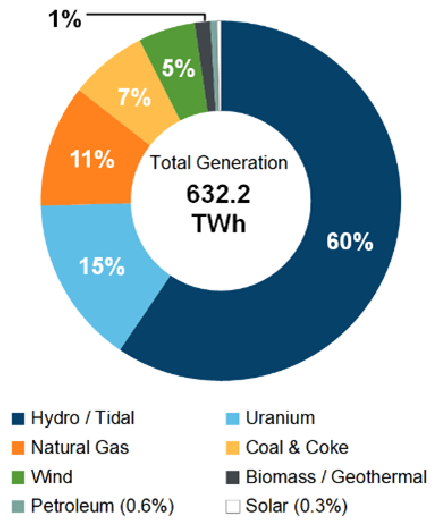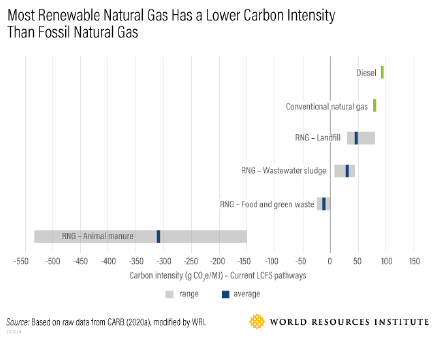Sustainable Solutions to Reduce an Organization’s Reliance on Natural Gas
Large organizations are increasingly embracing a range of sustainable solutions and alternatives to natural gas as an energy source, and it’s time for everyone to do their part. This includes looking at energy-efficient technologies and practices that can be implemented quickly to reduce overall energy consumption, thereby lowering the demand for natural gas.
The logical first step to reducing dependence on energy in general is to gain a thorough understanding of where and when energy is used in an organization’s facilities and processes.
– Steve Schmidt, Vice President, Sales and Marketing, VIP Energy Services Inc.
Here are three sustainable solutions and specific actions that organizations should be considering for the immediate future:
Conservation
- Conservation measures should be the first area organizations look to when working towards reducing natural gas dependence.
- Start by understanding where and when energy is being used in your organization’s various facilities and processes.
- Conduct studies on existing building commissioning and processes to identify energy inefficiencies in your facilities and process improvements.
- Identify areas to improve your overall operations through energy-efficient retrofits or minimizing the amount of heat lost through your building envelope.
- The lowest cost solution to reducing natural gas costs and carbon outputs is to reduce energy consumption and encourage conservation and increased efficiencies.
Electricity
- Ontario’s electricity grid has a relatively low carbon intensity when compared to other regions and can be a good alternative to natural gas use.
- Electrification of a facility can be costly. It may require new equipment and upgrades to a facility’s electrical infrastructure to ensure that it can handle the additional load required.
- Geothermal ground source heat pumps offer an alternative for heating and cooling buildings and can provide a significant reduction in emissions.
- Heat pump technology has been advancing, and new heat pump models are now able to handle colder climates.
- There are government programs and funding structures available that can make heat pumps an attractive option for reaching long-term net zero goals.
- Organizations should work with an independent advisor to identify the various direct and indirect costs associated with electrification.

Source: https://www.cer-rec.gc.ca/en/data-analysis/energy-markets/provincial-territorial-energy-profiles/provincial-territorial-energy-profiles-canada.html
Renewable Natural Gas (RNG)
- Also referred to as biomethane or upgraded biogas, RNG is a sustainable alternative to conventional natural gas as it’s created using a variety of feedstocks including landfills, animal manure, food scraps, and wastewater sludge.
- When procuring RNG, organizations should understand the source of the feedstock and the carbon intensity of the gas being purchased. The carbon intensity levels can differ depending on the feedstock used.
- According to the World Resources Institute, landfill RNG has an average carbon intensity of approximately 50 g CO2e/MJ, and RNG produced using animal manure has an average carbon intensity of approximately -310 g CO2e/MJ. In comparison, liquified natural gas (LNG) has an approximate carbon intensity of 84 g CO2e/MJ.[3]
- Greenhouse gas emissions-related benefits associated with RNG production and use primarily stem from:
- Avoiding greenhouse gas emissions that would otherwise occur under typical waste management practices (e.g., methane emissions from uncovered manure in uncovered lagoons)
- Displacing fossil fuel use
- There is a high demand for RNG, and as such sources can be difficult to find and may require a long-term purchase agreement directly with a producer.
- Availability is increasing as the market matures and it is becoming easier to procure.
An organization can instantly reduce their carbon footprint by purchasing all or a portion of their current annual consumption as RNG.
– Peter Stratakos, Vice President, Advisory & Client Services, Blackstone Energy Services

Source: https://www.wri.org/insights/7-things-know-about-renewable-natural-gas
Other approaches to consider include the adoption of renewable energy sources such as solar and wind power, which offer clean and abundant alternatives to natural gas for electricity generation. Organizations are also exploring the potential of biofuels and hydrogen as greener substitutes in specific applications where natural gas is traditionally used.
Coupled with robust energy management strategies, these sustainable solutions not only help reduce greenhouse gas emissions but also contribute to long-term cost savings, resilience, and a more sustainable future for organizations and the planet as a whole.
[3] https://www.ngvamerica.org/wp-content/uploads/2018/03/NGVAmerica-White-Paper-Fleets-Run-Cleaner-on-Natural-Gas_V2.pdf
Return to Industry Spotlight: Focus on Natural Gas Management
